Advanced Endodontics
…
218 pages
1 file

Sign up for access to the world's latest research
Abstract
Although every effort has been made to ensure that all owners of copyright material have been acknowledged in this publication, we would be glad to acknowledge in subsequent reprints or editions any omissions brought to our attention.
Figures (457)




















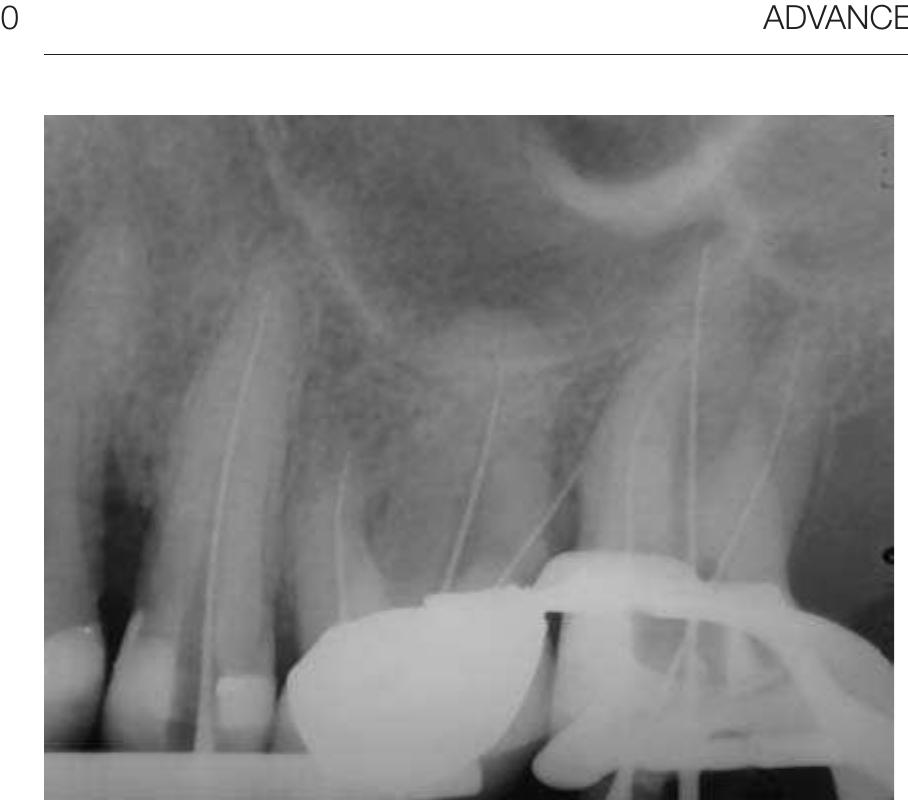














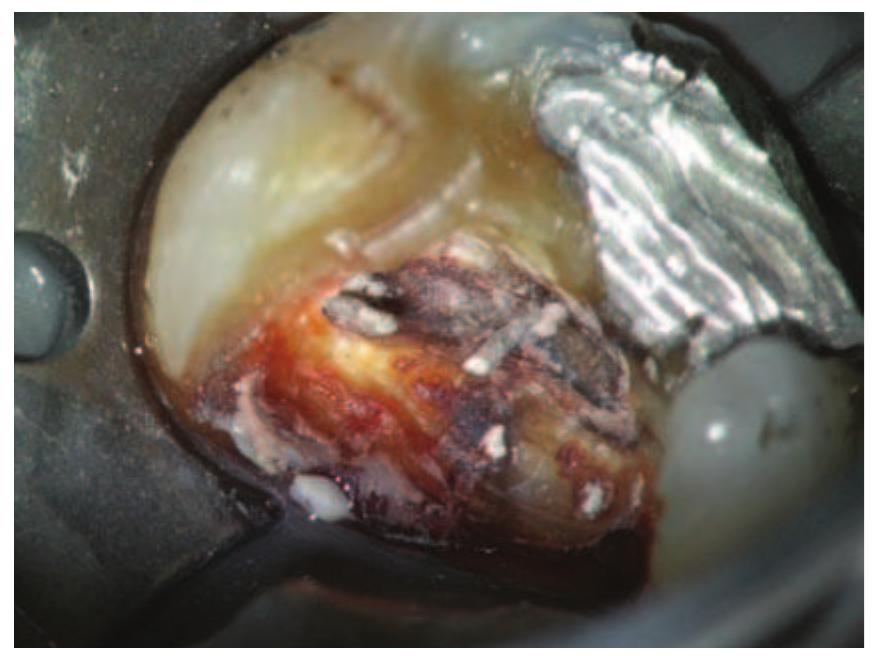

























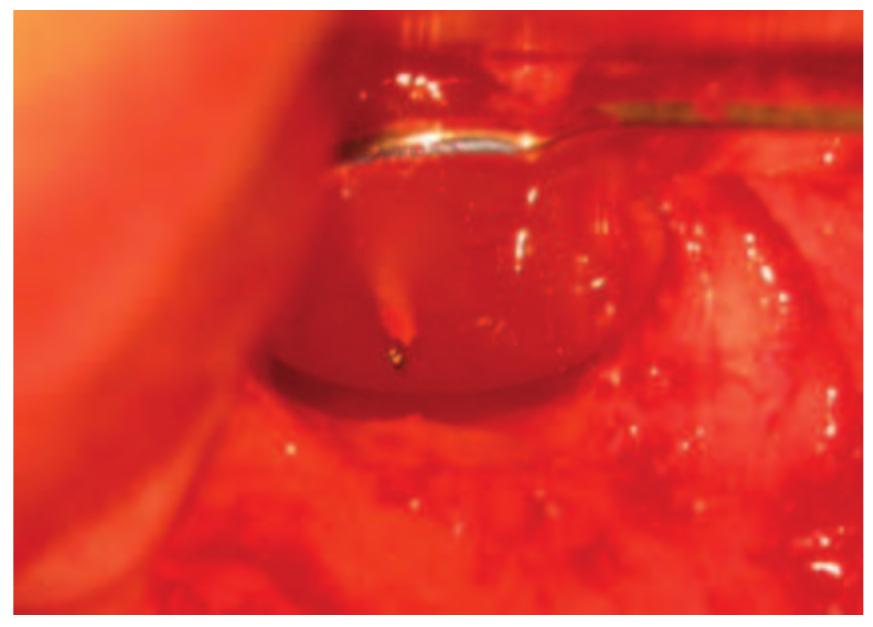


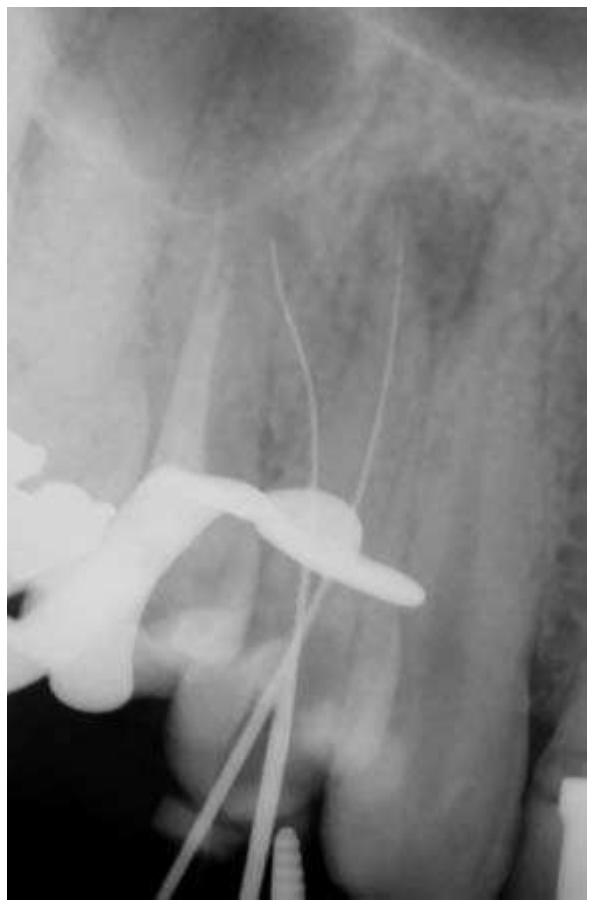


































































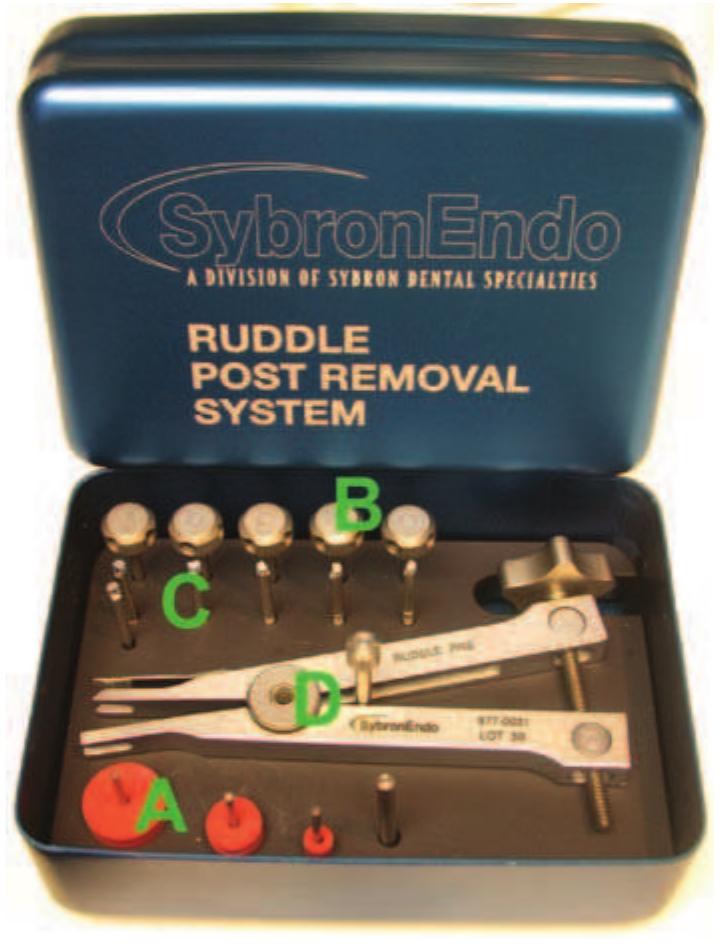
















































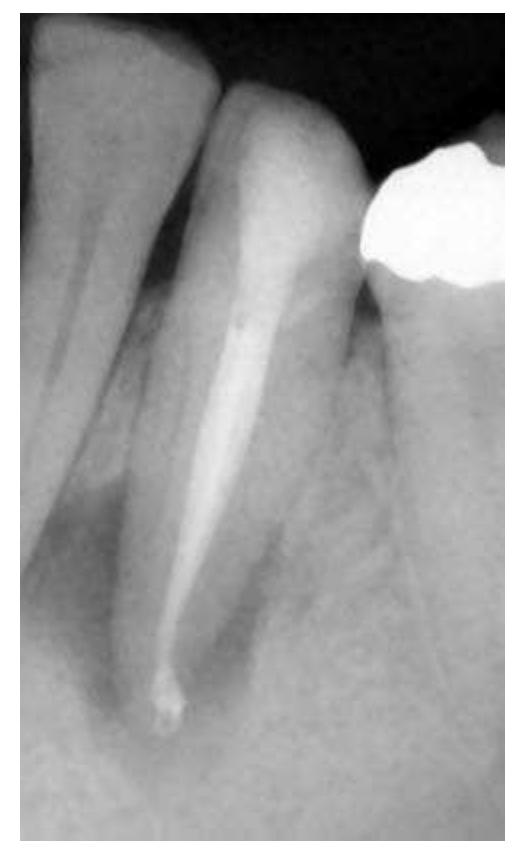















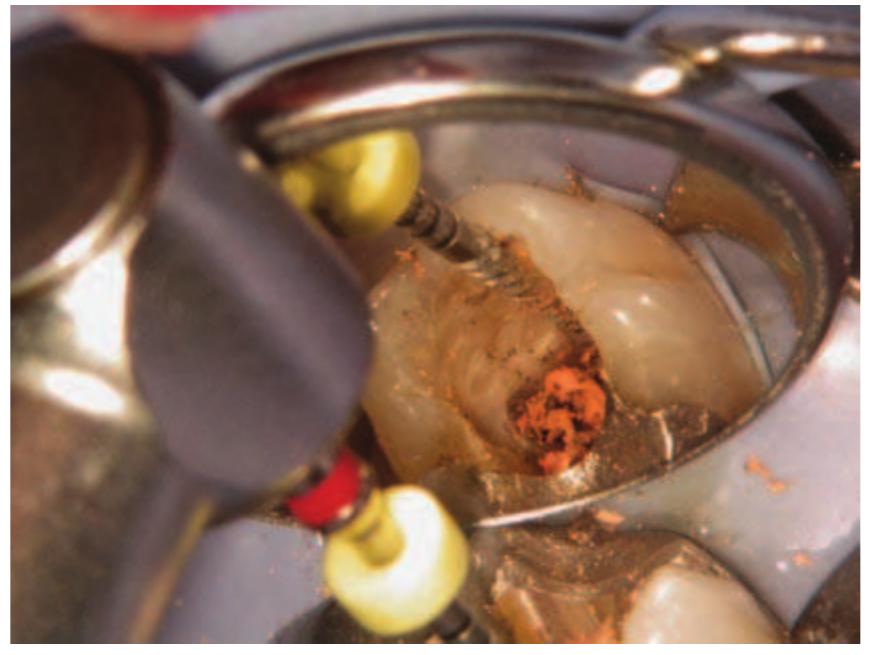












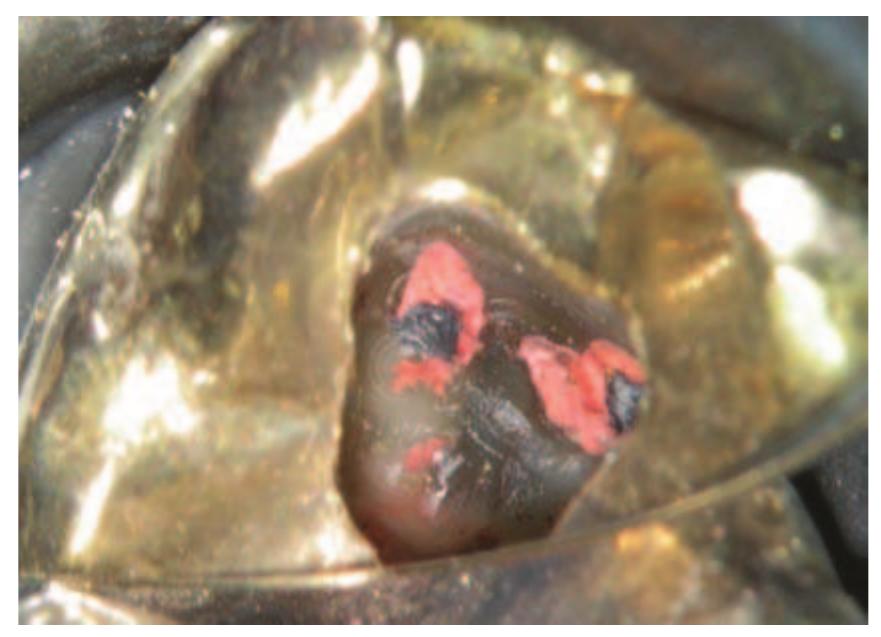






















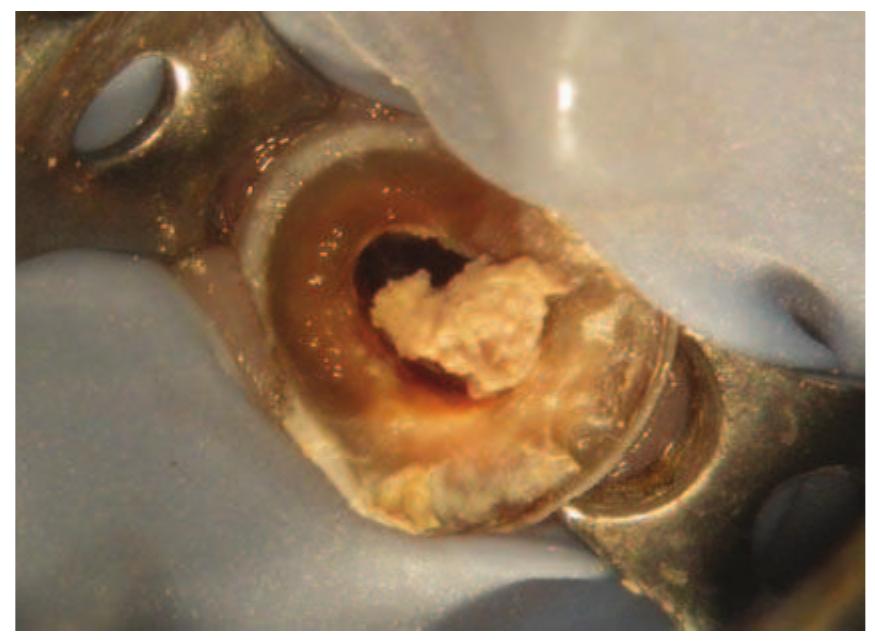




















































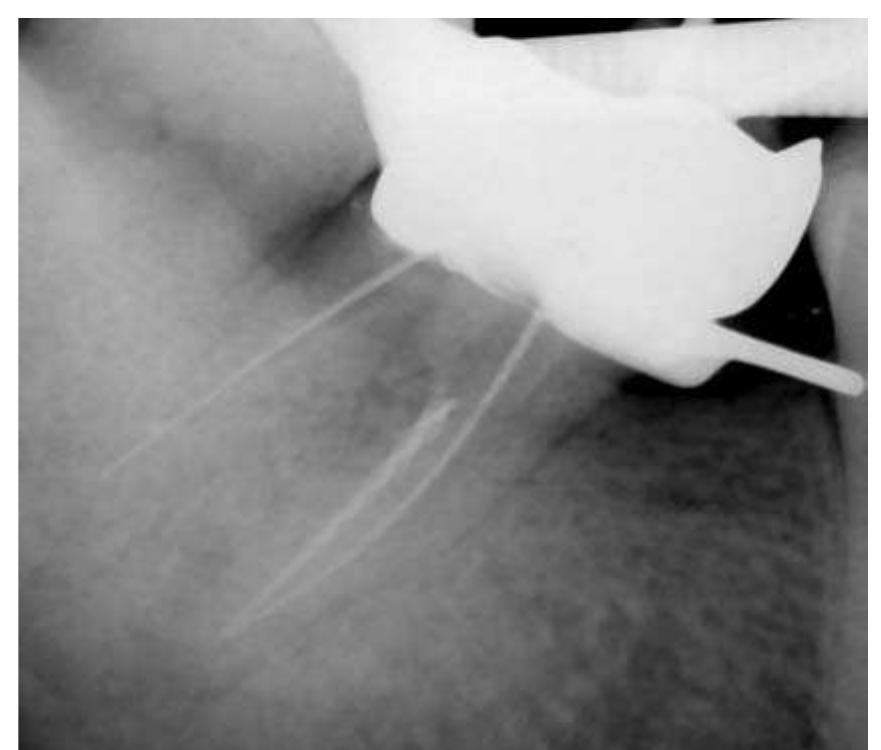






















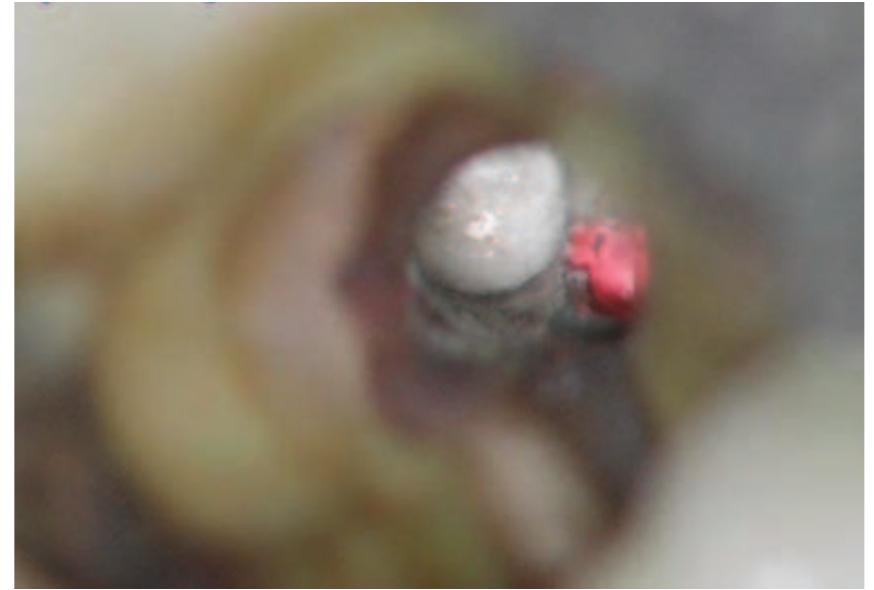

















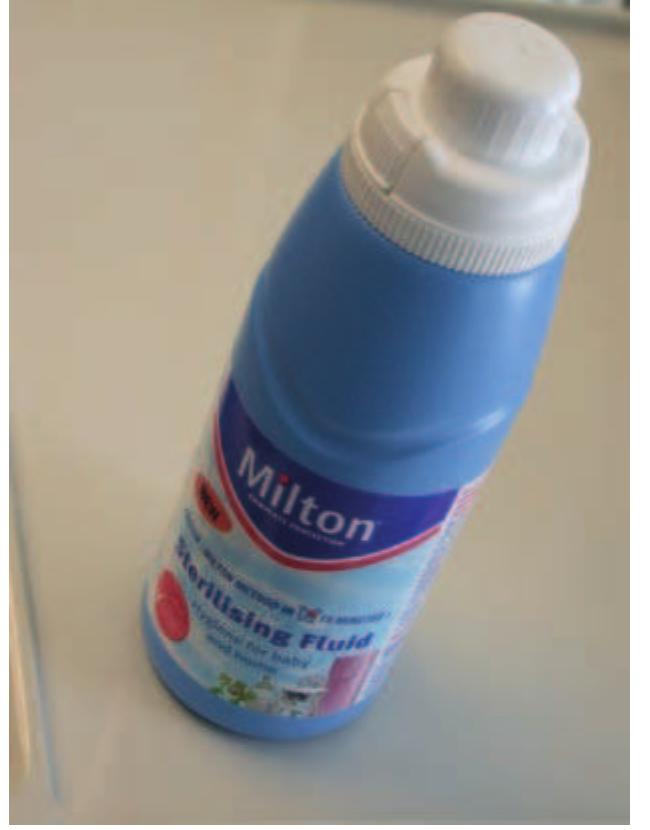


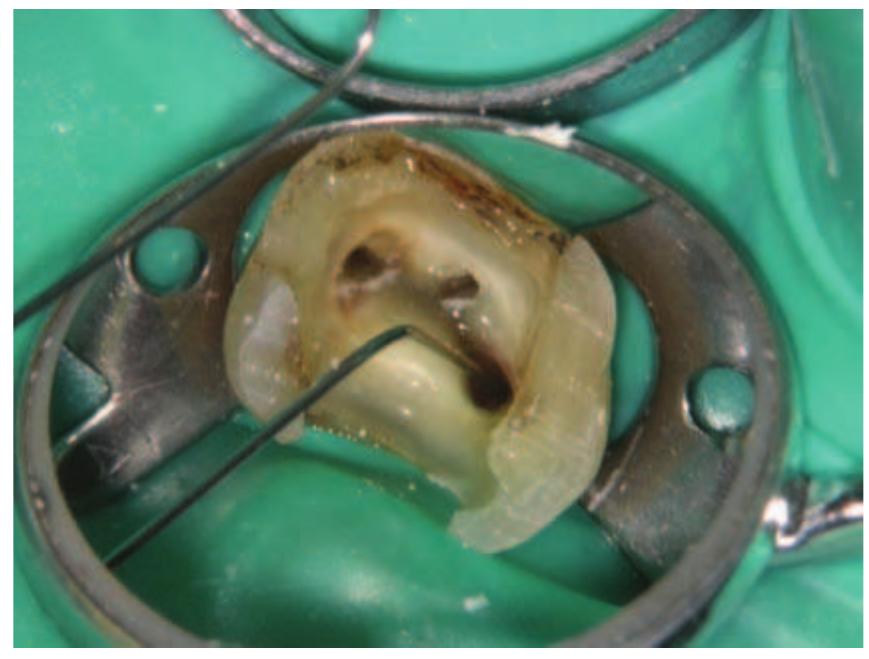











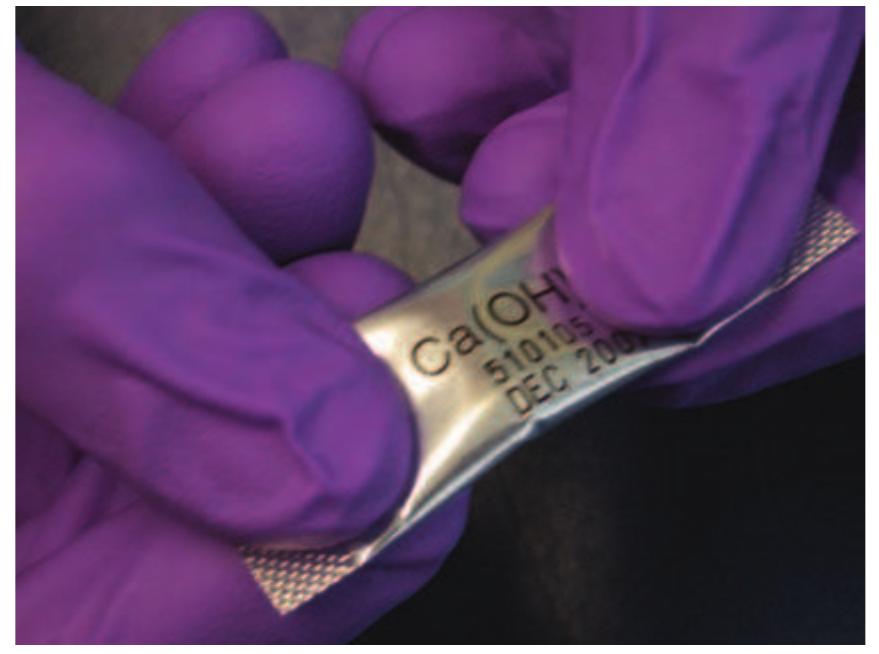



























































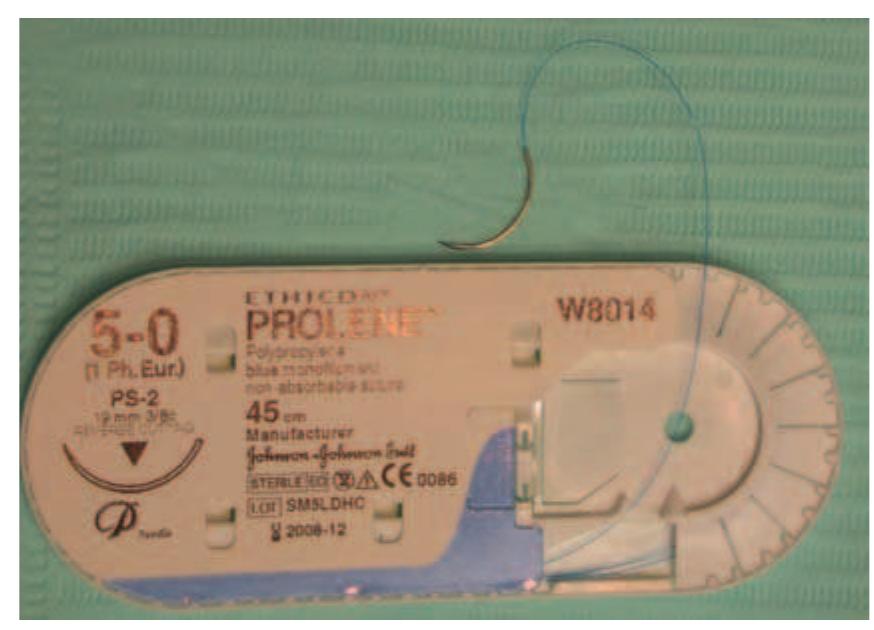


















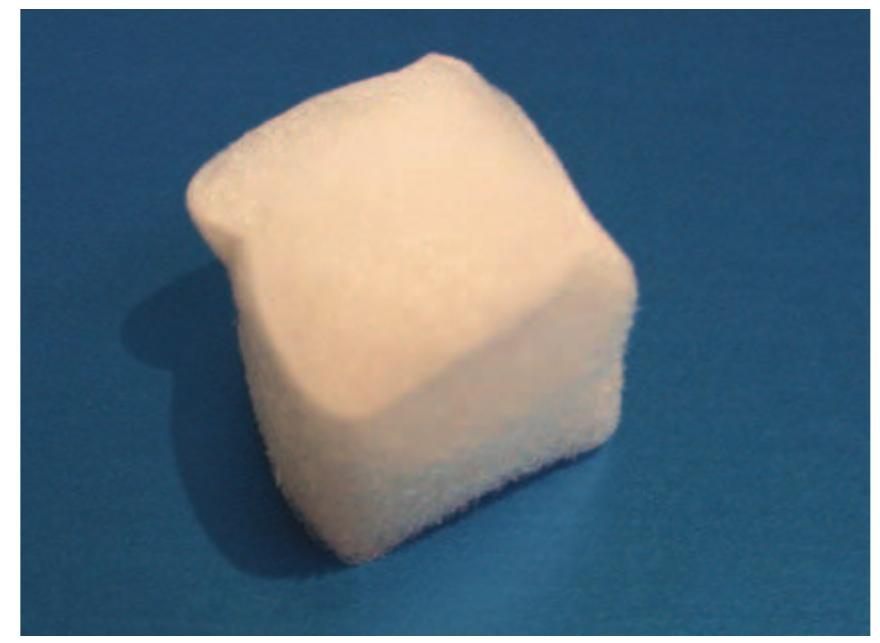

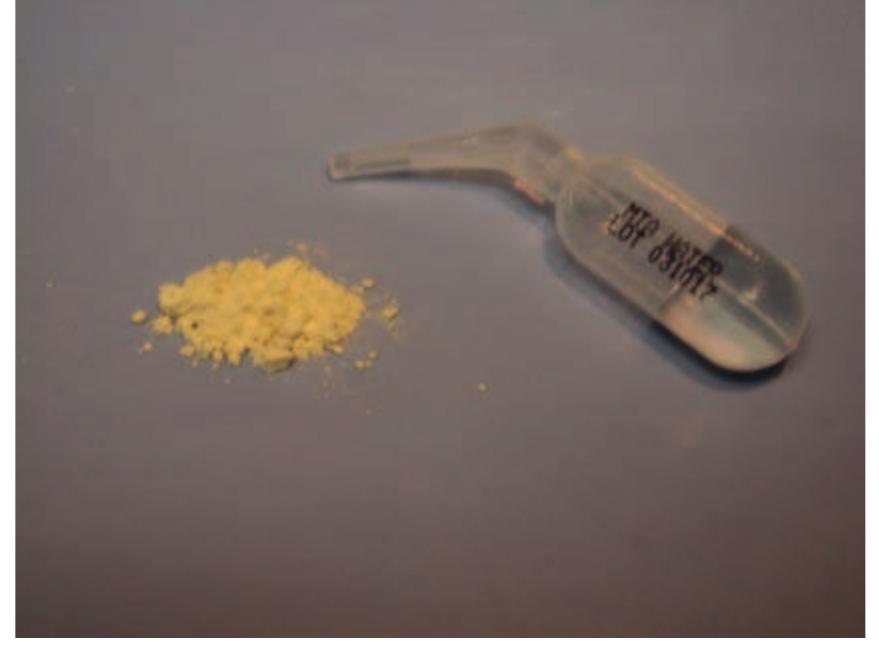


































Related papers
Although every effort has been made to ensure that all owners of copyright material have been acknowledged in this publication, we would be glad to acknowledge in subsequent reprints or editions any omissions brought to our attention.
Journal of Dental Health and Oral Research, 2025
The purpose of this educative work was to evaluate the goal of endodontics, indications and contra-indications of endodontic treatment, criteria of success, causes of failure, as well as one appointment vs. multiple appointments therapy and prognosis. This teaching materials was collected from some endodontic text books, researches, internet, CrossRef, Google scholar database, Midline and from My personal educative materials to make a complete story concerning "Modern Endodontic Therapy". The results demonstrated successful outcome with long term follow-up. It was concluded that careful clinical and radiographic examination should be performed, correct diagnosis and subsequent proper therapy should be achieved and long-term follow-up is required to obtain successful results.
BDJ, 2009
This second update paper aims to provide a review of changes and developments that have occurred within the fi eld of pulp therapy for primary teeth since the publication of the BDJ's series and textbook A clinical guide to endodontics. The biological basis of pulp therapy is an area where much recent research has taken place, particularly linked to the healing capacity of pulp tissue. This has lead to the adoption of treatment techniques aimed at maintaining pulp vitality. Such techniques are introduced here as a more contemporary, biological approach to pulp management in the primary dentition.
Journal of Clinical Medicine
Currently, the term “modern endodontics” is used more often due to contemporary applied science and original materials that have been developed in recent years [...]
All rights reserved. No part of this publication should be reproduced, stored in a retrieval system, or transmitted in any form or by any means: electronic, mechanical, photocopying, recording, or otherwise, without the prior written permission of the author and the publisher. This book has been published in good faith that the material provided by authors is original. Every effort is made to ensure accuracy of material, but the publisher, printer and authors will not be held responsible for any inadvertent error(s). In case of any dispute, all legal matters are to be settled under Delhi jurisdiction only. First Edition: 2008 ISBN 978-81-8448-386-4 Typeset at JPBMP typesetting unit Printed at Ajanta Press To Our Beloved Daughter Prisha
Endodontic Treatment in one session versus multiple sessions: an update review. (Atena Editora), 2023
Objetivos: Este estudo teve como objetivo analisar, por meio de revisão de literatura, os aspectos microbiológicos de dentes necróticos, sintomas dolorosos pós-operatórios, ação de medicação intracanal e a interferência desses fatores na taxa de sucesso do tratamento endodôntico. Métodos: Foi realizada uma pesquisa bibliográfica abrangendo artigos publicados em periódicos odontológicos no período de janeiro de 2009 a junho de 2023, recorrendo a bases de dados eletrônicas como Pubmed, Scielo, Medline, Web of Science, Scopus, Elsevier inseridos em periódicos da CAPES. Os artigos relevantes foram avaliados inicialmente com base em seus títulos e resumos. Posteriormente, os estudos selecionados foram submetidos à avaliação e revisão do texto completo para cumprimento dos critérios de inclusão e exclusão. De posse dos artigos selecionados, foi realizada a extração dos dados, avaliação da qualidade metodológica, síntese e análise dos dados. Resultados: Inicialmente, considerando apenas o título, foram encontrados 93 artigos, dos quais 62 não atendiam aos critérios de inclusão. Os 21 artigos selecionados para leitura na íntegra foram relacionados ao número de sessões, dor endodôntica pós-tratamento, medicação intracanal, microrganismos residentes no canal radicular e fatores relacionados ao sucesso ou fracasso endodôntico. Conclusão: Estudos demonstraram que o tratamento endodôntico em uma sessão não apresenta diferença no reparo periapical e no controle microbiano, além da incidência de dor quando comparado ao tratamento endodôntico realizado em mais de uma sessão.
Journal of Clinical Medicine
The long-lasting success of root canal treatment can be achieved by applying the many advancements and technologies developed during the treatment [...]

Loading Preview
Sorry, preview is currently unavailable. You can download the paper by clicking the button above.
References (381)
- Sjrögren U, Hagglund B, Sundqvist G, Wing K. Factors affecting the long-term results of endodontic treatment. Journal of Endodontics 1990; 16: 498-504.
- Dummer PM. The quality of root canal treatment in the general dental services. Journal of the Dental Practice Board England and Wales 1998; 19: 8-10.
- Saunders WP, Saunders EM, Sadiq J, Cruickshank E. Technical standard of root canal treatment in an adult Scottish sub- population. British Dental Journal 1997; 182: 382-386.
- Buckley M, Spangberg L. The prevalence and technical standard of endodontic treatment in an American sub-population. Oral Surgery, Oral Medicine, Oral Pathology 1995; 79: 92-100.
- De Cleen M, Schuurs A, Wesselink P, Wu MK. Periapical status and prevalence of endodontic treatment in an adult Dutch population. International Endodontic Journal 1993; 26: 112-119.
- Eckerbom M, Anderson JE, Magnasson T. Frequency and technical standard of endodontic treatment in a Swedish popu- lation. Endodontics and Dental Traumatology 1987; 3: 245-248.
- Lin LM, Pascon EA, Skribner J, Gaengler P, Langeland K. Clinical, radiographic, and treatment failures. Oral Surgery, Oral Medicine, Oral Pathology, Oral Radiology and Endodontics 1991; 71: 603-611.
- Siqueira JF Jr, Araújo MCP, Filho PFG, Fraga RC, Saboia Dantas CJ. Histological evaluation of the effectiveness of five instrumentation techniques for cleaning the apical third of root canals. Journal of Endodontics 1997; 23: 499-502.
- Kersten HW, Wesselink PR, Thoden Van Velzen SK. The diagnostic reliability of the buccal radiograph after root canal filling. International Endodontic Journal 1987; 20: 20-24.
- Sundqvist G, Figdor D, Persson S, Sjögren U. Microbiologic analysis of teeth with failed endodontic treatment and the outcome of conservative re-treatment. Oral Surgery, Oral Medicine, Oral Pathology, Oral Radiology and Endodontics 1998; 85: 86-93.
- Molander A, Reit C, Dahlén G, Kvist T. Microbiological status of root-filled teeth with apical periodontitis. International Endodontic Journal 1998; 31: 1-7.
- Marshall K, Page J. The use of rubber dam in the UK, a survey. British Dental Journal 1990; 169: 286-291.
- Stewardson DA. Endodontic standards in general dental practice -A survey in Birmingham, UK, Part 2. European Journal of Prosthodontics and Restorative Dentistry 2001; 9: 113-116.
- Bystrom A, Sundqvist G. The antibacter- ial action of sodium hypochlorite and EDTA in 60 cases of endodontic therapy. International Endodontic Journal 1985; 18: 35-40.
- Mullaney TP. Instrumentation of finely curved canals. Dental Clinics of North America 1979; 23: 575-585.
- Goerig AC, Michelich RJ, Schultz HH. Instrumentation of root canals in molar teeth using the step-down technique. Journal of Endodontics 1982; 8: 550-554.
- Buchanan LS. The standardized-taper root canal preparation -Part 1 Concepts for variably tapered shaping instruments. International Endodontic Journal 2000; 33: 516-529.
- Al Shalabi RM, Omer OE, Glennon J. Root canal anatomy of maxillary first and sec- ond permanent molars. International Endodontic Journal 2000; 33: 405-414.
- Benjamin KA, Dowson J. Incidence of two root canals in human mandibular incisor teeth. Oral Surgery, Oral Medicine, Oral Pathology, Oral Radiology and Endodontics 1974; 38: 122-126.
- Pitt Ford TR, Rhodes JS, Pitt Ford HE. Endodontics -problem solving in clinical practice. London: Martin Dunitz; 2002.
- Sequeira JF. Aetiology of root canal treat- ment failure: why well-treated teeth can fail. International Endodontic Journal 2001; 34: 1-10.
- Lee SJ, Monsef M, Torabinejad M. Sealing ability of a mineral trioxide aggregate for repair of lateral root perforations. Journal of Endodontics 1993; 19: 541-544.
- Firas Daoudi M. Microscopic manage- ment of endodontic procedural errors: perforation repair. Dental Update 2001; 28: 176-180.
- Strindberg LZ. The dependence of the results of pulp therapy on certain factors. Acta Odontologica Scandinavica 1956; 14: 1-175.
- Muruzábal M, Erasquin J, Devoto FCH. A study of periapical overfilling in root canal treatment in the molar of rat. Archives of Oral Biology 1966; 11: 373-383.
- Barbosa SV, Araki K, Spangberg LSW. Cytotoxicity of some modified root canal sealers and their leachable components. Oral Surgery, Oral Medicine, Oral Pathology, Oral Radiology and Endodontics 1993; 75: 357-361.
- Lin LM, Skribner JE, Gaengler P. Factors associated with endodontic treatment failures. Journal of Endodontics 1992; 18: 625-627.
- Sjögren U, Figdor D, Persson S, Sundqvist G. Influence of infection at the time of root filling on the outcome of endodontic treatment of teeth with api- cal periodontitis. International Endodontic Journal 1997; 30: 297-306.
- Yusuf H. The significance of the presence of foreign material periapically as a cause of failure of root treatment. Oral Surgery, Oral Medicine, Oral Pathology, Oral Radiology and Endodontics 1982; 54: 566-574.
- Saunders WP, Saunders EM. Coronal leak- age as a cause of failure in root canal ther- apy: a review. Endodontics and Dental Traumatology 1994; 10: 105-108.
- Ray HA, Trope M. Periapical status of endodontically treated teeth in relation to the technical quality of the root filling and the coronal restoration. International Endodontic Journal 1995; 28: 12-18.
- Kirkevang LL, Ørstavik D, Hörsted- Bindslev P, Wenzel A. Periapical status and quality of root fillings in a Danish population. International Endodontic Journal 2000; 33: 509-511.
- Ricucci D, Bergenholtz G. Bacterial status in root-filled teeth exposed to the oral environment by loss of restoration and fracture or caries -a histobacteriological study of treated cases. International Endodontic Journal 2003; 36: 787-802.
- Siren EK, Haapsalo MPP, Ranta K. Microbiological findings and clinical treatment procedures in endodontic cases selected for microbiological investigation. International Endodontic Journal 1997; 30: 91-95.
- Molander A, Reit C, Dahlen G. Microbiological status of root-filled teeth with apical periodontitis. International Endodontic Journal 1998; 31: 1-7.
- Sundqvist G, Figdor D, Persson S. Microbiologic analysis of teeth with failed endodontic treatment and the outcome of conservative re-treatment. Oral Surgery, Oral Medicine, Oral Pathology, Oral Radiology and Endodontics 1998; 85: 86-93.
- Hommez GMG, Verhelst R, Claeys G, Vaneechotte M, De Moor RJG. Investigation of the effect of the coronal restoration on the composition of the root canal microflora in teeth with apical peri- odontitis by means of T-RFLP analysis. International Endodontic Journal 2004; 37: 819-827.
- Nair PNR, Sjogren U, Kahnberg KE. Intraradicular bacteria and fungi in root- filled, asymptomatic human teeth with therapy-resistant periapical lesions: a long-term light and electron microscopic follow-up study. Journal of Endodontics 1990; 16: 580-588.
- Waltimo TMT, Orstavik D, Sirén EK, Haapasalo MPP. In vitro susceptibility of Candida albicans to four disinfectants and their combinations. International Endodontic Journal 1999; 32: 42-49.
- Sundqvist G, Reuterving CO. Isolation of Actinomyces israelii from periapical lesion. Journal of Endodontics 1980; 6: 602-606.
- Nair PNR. Periapical actinomycosis. Journal of Endodontics 1984; 12: 567-570.
- Sjögren U, Happonen RP, Kahnberg KE, Sundqvist G. Survival of Arachnia propi- onica in periapical tissue. International Endodontic Journal 1988; 21: 277-282.
- Sakellariou PL. Periapical actinomycosis: report of a case and review of the litera- ture. Endodontics and Dental Traumatology 1996; 12: 151-154.
- Costerton JW, Lewandowski Z, Debeer D, Caldwell D, Korber D, James G. Biofilms: the customized microniche. Journal of Bacteriology 1994; 176: 2137-2147.
- Tronstad L, Barnett F, Cervone F. Periapical bacterial plaque in teeth refractory to endodontic treatment. Endodontics and Dental Traumatology 1990; 6: 73-77.
- Siqueira Jf Jr, Lopes HP. Bacteria on the apical root surfaces of untreated teeth with periradicular lesions: a scanning electron microscopy study. International Endodontic Journal 2001 34: 617-627.
- Nair PNR, Sjögren U, Figdor D, Sundqvist G. Persistent periapical radiolucencies of root- filled human teeth, failed endodontic treat- ments, and periapical scars. Oral Surgery, Oral Medicine, Oral Pathology, Oral Radiology and Endodontics 1999; 87: 617-627.
- Nair PNR, Sjögren U, Sundqvist G. Cholesterol crystals as an etiological factor in non-resolving chronic inflammation: an experimental study in guinea pigs. European Journal of Oral Science 1998; 106: 644-650.
- Nair PNR, Sjögren U, Krey G, Sundqvist G. Therapy-resistant foreign body giant cell granuloma at the periapex of a root-filled human tooth. Journal of Endodontics 1990; 16: 589-595.
- Simon JHS, Chimenti RA, Mintz CA. Clinical significance of the pulse granu- loma. Journal of Endodontics 1982; 6: 116-119.
- Marbach JJ, Raphael KG. Phantom tooth pain: a new look at an old dilemma. Pain Medicine 2000; 1: 68-77.
- Marbach JJ, Hulbrock J, Hohn C, Segal AG. Incidence of phantom tooth pain: an atyp- ical facial neuralgia. Oral Surgery, Oral Medicine, Oral Pathology 1982; 53: 190-193.
- Rowbotham M, Harden N, Stacey B, Bernstein P, Magnus-Miller L. Gabapentin for the treatment of postherpetic neural- gia: a randomized controlled trial. JAMA 1998; 280: 1837-1842.
- Strindberg LZ. The dependence of the results of pulp therapy on certain factors. Acta Odontologica Scandinavica 1956; 14: (Suppl 21): 1-175.
- European Society of Endodontology Concensus report of the European Society of Endodontology on quality guidelines for endodontic treatment. International Endodontic Journal 1994; 27: 115-124.
- Reit C. Decision strategies in endodontics: on the design of a recall program. Endodontics and Dental Traumatology 1987; 3: 233-239.
- Smith J, Crisp J, Torney D. A survey: con- troversies in endodontic treatment and re- treatment. Journal of Endodontics 1981; 7: 477-483.
- Reit C, Gröndahl H-G. Management of periapical lesions in endodontically treated teeth. A study on clinical decision making. Swedish Dental Journal 1984; 8: 1-7.
- Reit C, Gröndahl H-G, Engström B. Endodontic treatment decisions: a study of the clinical decision-making process. Endodontics and Dental Traumatology 1985; 1: 102-107.
- Reit C, Gröndahl H-G. Endodontic retreat- ment decision making among a group of general practitioners. Scandinavian Journal of Dental Research 1988; 96: 112-117.
- Kvist T, Reit C, Esposito M, Mileman P, Bianchi S, Pettersson K, et al. Prescribing endodontic retreatment: towards a theory of dentist behaviour. International Endodontic Journal 1994; 27: 285-290.
- Kay E, Nuttall N. Clinical decision- making an art or a science? Part II making sense of treatment decisions. British Dental Journal 1995; 178: 113-116.
- Buckley GB, West B. A safe path or a legal minefield? Health Bulletin 1998; 56: 848.
- Bergenholtz G, Lekholm U, Milthon R, Heden G, Odesjo B, Engstrom B. Retreatment of endodontic fillings. Scandinavian Journal of Dental Research 1979; 87: 217-224.
- Eriksen H, Bjertness E. Prevalence of apical periodontitis and results of endodontic treatment in middle-aged adults in Norway. Endodontics and Dental Traumatology 1991; 7: 1-4.
- Eckerbom M, Anderson JE, Magnasson T. Frequency and technical standard of endodontic treatment in a Swedish popu- lation. Endodontics and Dental Traumatology 1987; 3: 245-248.
- Debelian GJ, Olsen I, Tronstad L. Systemic disease caused by oral microorganisms. Endodontics and Dental Traumatology 1994; 10: 57-65.
- Murray CA, Saunders WP. Root canal treatment and general health. A review of the literature. International Endodontic Journal 2000; 33: 1-18.
- Ørstavik D. Time-course and risk analyses of the development and healing of chronic apical periodontitis in man. International Endodontic Journal 1996; 29: 150-155.
- Ørstavik D, Kerekes K, Eriksen HM. The periapical index: a scoring system for radi- ographic assessment of apical periodontitis. Endodontics and Dental Traumatology 1986; 2: 20-34.
- Molven O, Halse A. Success rates for gutta percha and Kloropercha N-Ø root fillings made by undergraduate students: radiographic findings after 10-17 years. International Endodontic Journal 1988; 21: 384-390.
- Sjögren U, Häglund B, Sundqvist G, Wing K. Factors affecting the long-term results of endodontic treatment. Journal of Endodontics 1990; 16: 498-504.
- Friedman S, Löst C, Zarribian M, Trope M. Evaluation of success and failure after endodontic therapy using glass ionomer cement sealer. Journal of Endodontics 1995; 21: 384-390.
- Bergenholtz G, Lekholm U, Milthon R, Heden G, Ödesjö B, Engström B. Retreatment of endodontic fillings. Scandinavian Journal of Dental Research 1979; 87: 217-224.
- Van Nieuwenhuysen JP, Aouar M, D'Hoore W. Retreatment or radiographic monitor- ing in endodontics. International Endodontic Journal 1994; 27: 75-81.
- Bergenholtz G, Malmcrona E, Milthon R. Endodontic retreatment and periapical state. I Radiographic study of frequency of endodontically treated teeth and frequency of periapical lesions. Tandlakartidningen 1973; 65: 64-73.
- Chugal NM, Clive JM, Spangberg LS. Endodontic infection: some biologic and treatment factors associated with out- come. Oral Surgey, Oral Medicine, Oral Pathology, Oral Radiology and Endodontics 2003; 96: 81-90.
- Gorni FGM, Gagliani MM. The outcome of endodontic retreatment: a 2 yr follow- up. Journal of Endodontics 2004; 30: 1-4.
- Åkerblom A, Hasselgren G. The prognosis for endodontic treatment of obliterated root canals. Journal of Endodontics 1988; 14: 565-567.
- Hoskinson SE, Ng YL, Hoskinson AE, Moles DR, Gulabivala K. A retrospective comparison of outcome of root canal treat- ment using two different protocols. Oral Surgery, Oral Medicine, Oral Pathology, Oral Radiology and Endodontics 2002; 93: 705-715.
- Pitt Ford TR, Torabinejad T, McKendry DJ, Hong CU, Kariyawasam SP. Use of Mineral Trioxide Aggregate for repair of furcal perforations. Oral Surgery, Oral Medicine, Oral Pathology, Oral Radiology and Endodontics 1995; 79: 756-762.
- Ray HA, Trope M. Periapical status of endodontically treated teeth in relation to the technical quality of the root filling and the coronal restoration. International Endodontic Journal 1995; 28: 12-18.
- Saunders WP, Saunders EM. Coronal leakage as a cause of failure in root canal therapy: a review. Endodontics and Dental Traumatology 1994; 10: 105-108.
- Ricucci D, Bergenholtz G. Bacterial status in root-filled teeth exposed to the oral environment by loss of restoration and fracture or caries -a histobacteriological study of treated cases. International Endodontic Journal 2003; 36: 787-802.
- Torabinejad M, Ung B, Kettering JD. In vitro bacterial penetration of coronally unsealed endodontically treated teeth. Journal of Endodontics 1990; 16: 566-569.
- Friedman S. Considerations and concepts of case selection in the management of post-treatment endodontic disease (treatment failure). Endodontic Topics 2002; 1: 54-78.
- Eriksen H. Epidemiology of apical perio- dontitis. In: Ørstavik D, Pitt Ford TR, eds. Essential endodontology Oxford: Blackwell Science; 1998.
- Friedman S, Mor C. The success of endodontic therapy -healing and function- ality. Journal of Californian Dental Association 2004; 32: 493-503.
- Friedman S. Treatment outcome and prognosis of endodontic therapy. In: Ørstavik D, Pitt Ford TR, eds. Essential endodontology. Oxford: Blackwell Science; 1998.
- Briggs PFA, Scott BJJ. Evidenced-based dentistry: endodontic failure -how should it be managed? British Dental Journal 1997; 183: 159-164.
- Parreira FR, O'Connor RP, Hutter JW. Cast prosthesis removal using ultrasonics and a thermoplastic resin adhesive. Journal of Endodontics 1994; 20: 141-143.
- Pitt Ford TR, Rhodes JS, Pitt Ford HE. Endodontics: Problem-solving in clinical practice. London: Martin Dunitz; 2002.
- Siegel SC, Von Fraunhofer JA. Comparison of sectioning rates among carbide and diamond burs using three casting alloys. Journal of Prosthodontics 1999; 8: 240-244.
- Oliva RA. Review of methods for remov- ing cast gold restorations. Journal of American Dental Association 1979; 99: 840-847.
- Abbott PV. Incidence of root fractures and methods used for post removal. International Endodontic Journal 2002; 35: 63-67.
- Buoncristiani J, Seto BG, Caputo AA. Evaluation of ultrasonic and sonic instru- ments for intraradicular post removal. Journal of Endodontics 1994; 20: 486-489.
- Castrisos T, Abbott PV. A survey of methods used for post removal in specialist endodontic practice. International Endodontic Journal 2002; 35: 172-180.
- Berbert A, Filho MT, Ueno AH, Bramante CM, Ishikiriama A. The influence of ultra- sound in removing intraradicular posts. International Endodontic Journal 1995; 28: 100-102.
- Castrisos T, Palamara JE, Abbott PV. Measurement of strain on tooth roots dur- ing post removal with the Eggler post remover. International Endodontic Journal 2002; 35: 337-344.
- Machtou P, Sarfati P, Cohen AG. Post removal prior to retreatment. Journal of Endodontics 1989; 15: 552-554.
- Altshul JH, Marshall G, Morgan LA, Baumgartner JC. Comparison of dentinal crack incidence and of post removal time resulting from post removal by ultrasonic or mechanical force. Journal of Endodontics 1997; 23: 683-686.
- Gomes AP, Kubo CH, Santos RA, Santos DR, Padiha RQ. The influence of ultrasound on the retention of cast posts cemented with different agents. International Endodontic Journal 2001; 34: 93-99.
- Dixon EB, Kaczkowski PJ, Nicholls JI, Harrington GW. Comparison of two ultrasonic units for post removal. Journal of Endodontics 2002; 28: 111-115.
- Johnson WT, Leary JM, Boyer DB. Effect of ultrasonic vibration on post removal in extracted human premolar teeth. Journal of Endodontics 1996; 22: 487-488.
- Williams VD, Bjorndal AM. The Masserann technique for the removal of fractured posts in endodontically treated teeth. Journal of Prosthodontic Dentistry 1983; 49: 46-48.
- Krell KV, Jordan RD, Madison S, Aquilino S. Using ultrasonic scalers to remove frac- tured root posts. Journal of Prosthodontic Dentistry 1986; 55: 46-49.
- Smith BJ. The removal of fractured post fragments in general dental practice using ultrasonic vibration. Dental Update 2002; 29: 488-491.
- Chandler NP, Qualtrough AJ, Purton DG. Comparison of two methods for the removal of root canal posts. Quintessence International 2003; 34: 534-536.
- Smith BJ. Removal of fractured posts using ultrasonic vibration: an in vivo study. Journal of Endodontics 2001; 27: 632-634.
- Gesi A, Magnolfi S, Gorracci C, Ferrari M. Comparison of two techniques for remov- ing fibre posts. Journal of Endodontics 2003; 29: 580-582.
- Nayyar A, Walton RE, Leonard LA. An amalgam coronal-radicular dowel and core technique for endodontically treated posterior teeth. Journal of Prosthetic Dentistry 1980; 43: 511-515.
- Goon VW. Efficient amalgam core elimi- nation and root preservation with ultra- sonic instrumentation. Journal of Prosthetic Dentistry 1992; 68: 261-264.
- Block RM, Lewis RD, Hirsh J, Coffey J, Langeland K. Systemic distribution of [ 14 C] labelled paraformaldehhyde incor- porated within formocresol following pulpotomies in dogs. Journal of Endodontics, 1983; 9: 176-189.
- Ørstavik D, Hongslo JK. Mutagenicity of endodontic sealers. Biomaterials 1985; 6: 129-132.
- Vranas RN, Hartwell GR, Moon PC. The effect of endodontic solutions on resorcinol- formalin paste. Journal of Endodontics 2003; 29: 69-72.
- Lambriandis T, Margeloo J, Beltes P. Removal efficiency of calcium hydroxide dressing from the root canals. Journal of Endodontics 1999; 25: 85-88.
- Calt S, Serper A. Dentinal tubule penetra- tion of root canal sealers after root canal dressing with calcium hydroxide. Journal of Endodontics 1999; 25: 431-433.
- Bowman GA. Root filling. Missouri Dental Journal 1876; 8: 372-376.
- Ferreira JJ, Rhodes JS, Pitt Ford TR. The efficacy of gutta-percha removal using ProFiles. International Endodontic Journal 2001; 34: 267-274.
- Hülsmann M, Stotz S. Efficacy, cleaning ability and safety of different devices for gutta-percha removal in root canal retreat- ment. International Endodontic Journal 1997; 30: 227-233.
- Bramante CM, Betti LV. Efficacy of Quantec rotary instruments for gutta- percha removal. International Endodontic Journal 2000; 33: 463-467.
- Betti LV, Bramanate CM. Quantec SC rotary instruments versus hand files for gutta percha removal in root canal retreatment. International Endodontic Journal 2001; 34: 514-519.
- Viducic D, Jukic S, Karlovic Z, Bozic Z, Miletic I, Anic I. Removal of gutta percha from root canals using Nd:YAG laser. International Endodontic Journal 2003; 36: 670-673.
- Hülsmann M, Bluhm V. Efficacy, cleaning ability and safety of different rotary NiTi instruments in root canal retreatment. International Endodontic Journal 2004; 37: 468-476.
- Masiero AV, Barletta FB. Effectiveness of different techniques for removing gutta percha during retreatment. International Endodontic Journal 2005; 38: 2-7.
- Baratto Filho F, Ferreira EL, Fariniuk LF. Efficiency of the 0.04 taper ProFile during the re-treatment of gutta-percha-filled root canals. International Endodontic Journal 2002; 35: 651-654.
- Wennberg A, Ørstavik D. Evaluation of alternatives to chloroform in endo- dontic practice. Endodontics and Dental Traumatology 1989; 5: 234-237.
- Barbosa SV, Burkard DH, Spångberg LSW. Cytotoxic effects of gutta percha solvents. Journal of Endodontics 1994; 20: 6-8.
- Bertrand MF, Pellegrino JC, Rocca JP, Klinghofer A, Bolla M. Removal of Thermafil root canal filling material. Journal of Endodontics 1997; 23: 54-57.
- Frajlich SR, Goldberg F, Massone EJ, Cantarini C, Artaza LP. Comparative study of retreatment of Thermafil and lateral con- densation endodontic fillings. International Endodontic Journal 1998; 31: 354-357.
- Wolcott JF, Himel VT, Hicks ML. Thermafil retreatment using a new 'System B' technique or a solvent. Journal of Endodontics 1999; 25: 761-764.
- Ibarrola JL, Knowles KI, Ludlow MO. Retrievability of Thermafil plastic cores using organic solvents. Journal of Endodontics 1993; 19: 417-418.
- Wilcox LR. Thermafil retreatment with and without chloroform solvent. Journal of Endodontics 1993; 19: 563-566.
- Shipper G, Ørstavik D, Teixeira FB, Trope M. An evaluation of microbial leak- age in roots filled with a thermoplastic synthetic polymer-based root canal filling material (Resilon). Journal of Endodontics 2004; 30: 342-347.
- Jeng HW, El Deeb. Removal of hard paste fillings from the root canal by ultrasonic instrumentation. Journal of Endodontics 1997; 13: 295-298.
- Friedman S, Stabholz A, Tamse A. Endodontic retreatment -case selection and technique. Journal of Endodontics 1990; 16: 543-549.
- Gambrel MG, Hartwell G, Moon PC, Cardon JW. The effect of endodontic solu- tions on resorcinol-formalin paste in teeth. Journal of Endodontics 2005; 31: 25-29.
- Endosolv. Product for removing canal fillings. Manufacturers insert. Septodont, St Maur-des-Fosses, France; 2000.
- Carr GB. Microscopes in endodontics. Journal of the Californian Dental Association 1992; 20: 55-61.
- Hülsmann M, Schinkel I. Influence of sev- eral factors on the success or failure of removal of fractured instruments from the root canal. Endodontics and Dental Traumatology 1999; 15: 252-258.
- Ward JR, Parashos P, Messer HH. Evaluation of an ultrasonic technique to remove fractured rotary nickel-titanium instruments from root canals: an experi- mental study. Journal of Endodontics 2003; 29: 756-763.
- Suter B, Lussi A, Sequiera P. Probability of removing fractured instruments from root canals. International Endodontic Journal 2005; 38: 112-123.
- Ritchie GM, Weine FS, Smulson MH. Modifications for successful use of silver points in endodontics. Journal of the Academy of General Dentistry 1972; 20: 35-39.
- Weine FS, Healey HJ, Lippert JL. Use of silver points with improved digital control. Journal American Dental Association 1971; 83: 125-128.
- Chana H, Briggs P, Moss R. Degradation of a silver point in association with endodontic infection. International Endodontic Journal 1998; 31: 141-146.
- Goon WW, Lugassy AA. Periapical elec- trolytic corrosion in the failure of silver point endodontic restorations: report of two cases. Quintessence International 1995; 26: 629-633.
- Brady JM, del Rio CE. Corrosion of endodontic silver cones in humans: a scanning electron microscope and X-ray microprobe study. Journal of Endodontics 1975; 1: 205-210.
- Goldberg F. Relation between corroded silver points and endodontic failures. Journal of Endodontics 1981; 7: 224-227.
- Plack WF, Vire DE. Retrieval of endodon- tic silver points. General Dentistry 1984; 32: 124-127.
- Crane DL. Posts, points, and instruments: how to retrieve them, Part 1. Compendium 1990; 11: 563-565.
- Hülsmann M. The retrieval of silver cones using different techniques. International Endodontic Journal 1990; 23: 130-134.
- Coutinho Filho T, Krebs RL, Berlinck TC, Galindo RG. Retrieval of a broken endodontic instrument using cyanoacry- late adhesive. Case report. Brazilian Dental Journal 1998; 9: 57-60.
- Spriggs K, Gettleman B, Messer HH. Evaluation of a new method for silver point removal. Journal of Endodontics 1990; 16: 335-338.
- Elazer PD, O'Connor RP. Innovative uses of hypodermic needles in endodontics. Journal of Endodontics 1999; 25: 190-191.
- Suter B. A new method for retrieving sil- ver points and separated instruments from root canals. Journal of Endodontics 1998; 24: 446-448.
- Shen Y, Peng B, Cheung GS. Factors asso- ciated with the removal of fractured NiTi instruments from root canals. Oral Surgery, Oral Medicine, Oral Patholology, Oral Radiology, Endodontics 2004; 98: 605-610.
- Hülsmann M, Schinkel I. Influence of sev- eral factors on the success or failure of removal of fractured instruments from the root canal. Endodontics and Dental Traumatology 1999; 15: 252-258.
- Souyave LC, Inglis AT, Alcalay M. Removal of fractured endodontic instru- ments using ultrasonics. British Dental Journal 1985; 159: 251-253.
- Hülsmann M. Removal of fractured instru- ments using a combined automated/ ultrasonic technique. Journal of Endodontics 1994; 20: 144-147.
- McCullock AJ. The removal of restorations and foreign objects from root canals. Quintessence International 1993; 24: 245-249.
- Hülsmann M. Methods for removing metal obstructions from the root canal. Endodontics and Dental Traumatololgy 1993; 9: 223-237.
- Nagai O, Tagi N, Kayaba Y, Kodama S, Osada T. Ultrasonic removal of broken instruments in root canals. International Endodontic Journal 1986; 19: 298-304.
- Ruddle CJ. Removal of broken instru- ments. Endodontic Practice 2003; 6: 13-19.
- Haikel Y, Serfaty R, Bateman G, Senger B, Alleman C. Dynamic and cyclic fatigue of engine-driven rotary nickel-titanium instruments. Journal of Endodontics 1999; 25: 434-440.
- Ward JR, Parashos P, Messer HH. Evaluation of an ultrasonic technique to remove fractured rotary nickel-titanium endodontic instruments from root canals: clinical cases. Journal of Endodontics 2003; 29: 764-767.
- von Arx T. Frequency and type of canal isthmuses in first molars detected by endoscopic inspection during periradicu- lar surgery. International Endodontic Journal 2005; 38: 160-168.
- Grossman LI. Fate of endodontically treated teeth with fractured instruments. Journal of the British Endodontic Society 1968; 2: 35-37.
- Crump MC, Natkin E. Relationship of bro- ken root canal instruments to endodontic case prognosis: a clinical investigation. Journal of the American Dental Association 1970; 80: 1341-1347.
- Fuss Z, Trope M. Root perforations: classi- fication and treatment choices based on prognostic factors. Endodontics and Dental Traumatology 1996; 12: 255-264.
- Fridland M, Rosado R. Mineral trioxide aggregate (MTA) solubility and porosity with different water-to-powder ratios. Journal of Endodontics 2003; 29: 814-817.
- Torabinejad M, Watson TF, Pitt Ford TR. Sealing ability of mineral trioxide aggregate when used as a root end filling material. Journal of Endodontics 1993; 19: 591-595.
- Soluti A, Lee SJ, Torabinejad M. Sealing ability of mineral trioxide aggregate in lateral perforations. Journal of Endodontics 1993; 19: 199.
- Pitt Ford TR, Torabinejad M, McKendry DJ, Hong CU, Kariywasam SP. Use of min- eral trioxide aggregate for repair of furcal perforations. Oral Surgery, Oral Medicine, Oral Radiology and Endodontics 1995; 79: 756-762.
- Holland R, de Souza V, Nery MJ, Otoboni Filho JA, Bernabe PF, Dezan E. Mineral tri- oxide aggregate repair of lateral root per- forations. Journal of Endodontics 2001; 27: 281-284.
- Mitchell PJ, Pitt Ford TR, Torabinejad M, McDonald F. Osteoblast biocompatibility of mineral trioxide aggregate. Biomaterials 1999; 20: 167-173.
- Torabinejad M, Hilga RK, McKendry DJ, Pitt Ford TR. Dye leakage of four root end filling materials. Effects of blood contami- nation. Journal of Endodontics 1994; 20: 159-163.
- Oynick J, Oynick T. A study of a new material for retrograde fillings. Journal of Endodontics 1978; 4: 203-206.
- Dorn SO, Gartner AH. Retrograde filling materials: a retrospective success-failure study of amalgam, EBA and IRM. Journal of Endodontics 1990; 16: 391-393.
- Chong BS, Pitt Ford TR, Hudson M. A prospective study of Mineral Trioxide Aggregate and IRM when used as root- end filling materials in endodontic sur- gery. International Endodontic Journal 2003; 36: 520-526.
- Crooks WG, Anderson RW, Powell BJ, Kimbrough WF. Longitudinal evaluation of the seal of IRM root end fillings. Journal of Endodontics 1994; 20: 250-252.
- Lemon RR. Nonsurgical repair of perfora- tion defects. Internal matrix concept. Dental Clinics of North America 1992; 36: 439-457.
- Bargholtz C. Perforation repair with min- eral trioxide aggregate: a modified matrix concept. International Endodontic Journal 2005; 38: 59-69.
- Yoshioka T, Kobayashi C, Suda H. Detection rate of root canal orifices with a microscope. Journal of Endodontics 2002; 28: 452-453.
- von Arx T. Frequency and type of canal isthmuses in first molars detected by endoscopic inspection during periradicu- lar surgery. International Endodontic Journal 2005; 38: 160-168.
- Sabala CL, Roane JB, Southard LZ. Instrumentation of curved canals using a modified tipped instrument: a comparison study. Journal of Endodontics 1988; 14: 59-64.
- Sepic AO, Pantera EA, Neaverth EJ, Anderson RW. A comparison of Flex-R file and K-type files for enlargement of severely curved molar root canals. Journal of Endodontics 1989; 15: 240-245.
- Bergenholtz G, Lekholm U, Milthon R, Heden G, Ödesjö B, Engström B. Retreatment of endodontic fillings. Scandinavian Journal of Dental Research 1979; 87: 217-223.
- Bergenholtz G, Lekholm U, Milthon R, Engström B. Influence of apical overinstru- mentation and overfilling on re-treated root canals. Journal of Endodontics 1979; 5: 310-314.
- Sjögren U, Figdor D, Persson S, Sundqvist G. Influence of infection at the time of root filling on the outcome of endodontic treat- ment of teeth with apical periodontitis. International Endodontic Journal 1997; 30: 297-306.
- Engström B. The significance of entero- cocci in root canal treatment. Odontological Reviews 1964; 15: 87-105.
- Vetucci FJ. Root canal anatomy of human permanent teeth. Oral Surgery, Oral Medicine, Oral Pathology 1984; 58: 589-599.
- Shovelton DS. The presence and distribu- tion of microorganisms within non-vital teeth. British Dental Journal 1964; 117: 101-107.
- Pinheiro ET, Gomes BPFA, Ferraz CCR. Microorganisms from canals of root-filled teeth with periapical lesions. International Endodontic Journal 2003; 36: 1-11.
- Nair PN. Light and electron microscopic studies of root canal flora and periapical lesions. Journal of Endodontics 1987; 13: 29-39.
- Costerton JW, Geesey GG, Cheng KJ. How bacteria stick. Scientific American 1978; 238: 86-95.
- Waltimo TM, Sirén EK, Torkko HL, Olsen I, Haapasalo MP. Fungi in therapy-resistant apical periodontitis. International Endodontic Journal 1997; 30: 96-101.
- Molander A, Reit C, Dahlén G, Kvist T. Microbiological status of root-filled teeth with apical periodontitis. International Endodontic Journal 1998; 31: 1-7.
- Stewart PS, Costerton JW. Antibiotic resistance of bacteria in biofilms. Lancet 2001; 358: 135-138.
- Abdullah M, Ng YL, Gulabivala K, Moles DR, Spratt DA. Susceptibilties of two Enterococcus faecalis phenotypes to root canal medications. Journal of Endodontics 2005; 31: 30-36.
- Haapasalo HK, Sirén EK, Waltimo TM, Ørstavik D, Haapasalo MP. Inactivation of local root canal medicaments by dentine: an in vitro study. International Endodontic Journal 2000; 33: 126-131.
- Dakin HD. The antiseptic action of hypochlorite. British Medical Journal 1915; December: 809-810.
- Dakin HD. On the use of certain antiseptic substances in the treatment of infected wounds. British Medical Journal 1915; August: 327-331.
- Coolidge E. The diagnosis and treatment of conditions resulting from diseased den- tal pulps. Journal of the National Dental Association 1919; 6: 337-349.
- Byström A, Sundqvist G. Bacteriologic evaluation of the effect of 0.5% sodium hypochlorite in endodontic therapy. Oral Surgery, Oral Medicine, Oral Pathology 1983; 55: 307-312.
- Byström A, Sundqvist G. The antibacterial effect of sodium hypochlorite and EDTA in 60 cases of endodontic therapy. International Endodontic Journal 1985; 18: 35-40.
- Becking AG. Complications in the use of sodium hypochlorite during endodontic treatment. Oral Surgery, Oral Medicine, Oral Pathology 1991; 71: 346-348.
- Evans M, Davies JK, Sundqvist G, Figdor D. Mechanisms involved in the resistance of Enterococcus faecalis to calcium hydroxide. International Endodontic Journal 2002; 25: 221-228.
- Baker NA, Eleazer PD, Averbach RE, Seltzer S. Scanning electron microscopic study of the efficacy of various irrigating solutions. Journal of Endodontics 1975; 1: 127-135.
- Baumgartner JC, Brown CM, Mader CL, Peters DD, Shulman JD. A scanning elec- tron microscope evaluation of root canal debridement using saline, sodium hypochlorite, and citric acid. Journal of Endodontics 1984; 11: 525-531.
- Baumgartner JC, Cuenin PR. Efficacy of several concentrations of sodium hypochlorite for root canal irrigation. Journal of Endodontics 1992; 18: 605-612.
- Baumgartner JC, Mader CL. A scanning electron microscope evaluation of four root canal irrigation regimes. Journal of Endodontics 1987; 13: 147-157.
- Safavi E, Spangberg L, Langeland K. Root canal dentine tubule disinfection. Journal of Endodontics 1990; 16: 207-210.
- Spangberg LSW, Haapasalo M. Rationale and efficacy of root canal medicaments and root filling materials with emphasis on treatment outcome. Endodontic Topics 2002; 2: 35-58.
- Fraser JG. Chelating agents: their soften- ing effect on root canal dentine. Oral Surgery, Oral Medicine, Oral Pathology 1975; 37: 803-836.
- Ørstavik D, Haapasalo M. Disinfection by endodontic irrigants and dressings of experimentally infected dentine tubules. Endodontics and Dental Traumatology 1990; 6: 142-149.
- Abbott PV, Heijkoop PS, Cardaci SC, Hume WR, Heithersay GS. An SEM study of the effects of different irrigation sequences and ultrasonics. International Endodontic Journal 1991; 24: 308-316.
- Von der Fehr FR, Nygaard-Østby B. Effects of EDTAC and sulfuric acid on root canal dentine. Oral Surgery, Oral Medicine, Oral Pathology 1963; 16: 199-205.
- Torabinejad M, Khademi AA, Babogoli J. A new solution for the removal of smear layer. Journal of Endodontics 2003; 29: 170-175.
- Shabahang S, Torabinejad M. Effect of MTAD on Enterococcus faecalis conta- minated root canals of extracted human teeth. Journal of Endodontics 2003; 29: 576-579.
- Torabinejad M, Cho Y, Khademi AA, Bakland LK, Shabahang S. The effect of various concentrations of sodium hypochlorite on the ability of MTAD to remove smear layer. Journal of Endodontics 2003; 29: 233-239.
- Beltz RE, Torabinejad M, Pouresmail M. Quantitative analysis of the solubilizing action of MTAD, sodium hypochlorite, and EDTA on bovine pulp and dentine. Journal of Endodontics 2003; 29: 334-337.
- Zhang W, Torabinejad M, Li Y. Evaluation of cytotoxicity of MTAD using the MTT- tetrazolium method. Journal of Endodontics 2003; 29: 654-657.
- Marais JT. Cleaning efficacy of a new root canal irrigation solution: a preliminary investigation. International Endodontic Journal 2000; 33: 320-325.
- Marais JT, Williams WP. Antimicrobial effectiveness of electrochemically acti- vated water as an endodontic irrigation solution. International Endodontic Journal 2001; 34: 237-243.
- Horiba N, Hiratsuka K, Onoe T. Bactericidal effect of electrolyzed neutral water on bacteria isolated from infected root canals. Oral Surgery, Oral Medicine, Oral Pathology, Oral Radiology and Endodontics 1999; 87: 83-87.
- Hata G, Uemura S, Weine FS, Toda T. Removal of smear layer in the root canal using oxidative potential water. Journal of Endodontics 1996; 22: 643-645.
- Hata G, Hayami S, Weine FS, Toda T. Effectiveness of oxidative potential water as a root canal irrigant. International Endodontic Journal 2001; 34: 308-317.
- Solovyeva AM, Dummer PM. Cleaning effectiveness of root canal irrigation with electrochemically activated anolyte and catholyte solutions: a pilot study. International Endodontic Journal 2000; 33: 494-504.
- Marais JT, Brozel VS. Electro-chemically activated water in dental unit water lines. British Dental Journal 1999; 187: 154-158.
- Wilson M, Burns T, Pratten J, Pearson GJ. Bacteria in supra-gingival plaque samples can be killed by lower power laser light in the presence of photo- sensitiser. Journal of Applied Bacteriology 1995; 78: 569-574.
- Seal GJ, Ng YL, Spratt D, Bhatti M, Gulabivala K. An in vitro comparison of the bactericidal efficacy of lethal photo- sensitization or sodium hypochlorite irrigation on Streptococcus intermedius biofilms in root canals. International Endodontic Journal 2002; 35: 268-274.
- Bonsor SJ, Nichol R, Reid TMS, Pearson GJ. Microbiological evaluation of photo- activated disinfection in endodontics (an in vivo study). 2005; in press.
- Bonsor SJ, Nichol R, Reid TMS, Pearson GJ. Alternative regimens for root canal irrigation. 2005; in press.
- Hems RS, Gulabivala K, Ng Y, Ready D, Spratt DA. An in vitro evaluation of the ability of ozone to kill a strain of Enterococcus faecalis. International Endodontic Journal 2005; 38: 22-29.
- Rickard GD, Richardson R, Johnson T, McColl D, Hooper L. Ozone therapy for the treatment of dental caries. The Cochrane Database of Systematic Reviews 2004; Issue 3: www.update-software.com/Abstracts.
- Endox Endodontic System: http:/www. endox.com
- Lendini M, Alemanno E, Migliaretti G, Beratti E. The effect of high-frequency electrical pulses on organic tissue in root canals. International Endodontic Journal 2005; 38: 531-538.
- Khabbaz MG, Makropoulou MI, Serafetinides AA, Papadopoulous D, Papagiakoumou E. Q-switched versus free- running Er-YAG laser efficacy on the root canal walls of human teeth: a SEM study. Journal of Endodontics 2004; 30: 585-588.
- Chen WH. YSGG laser root canal therapy. Dentistry Today 2002; 21: 74-77.
- Pitt Ford TR, Rhodes JS, Pitt Ford HE. Endodontics: Problem solving in clinical practice. London: Martin Dunitz; 2002.
- Ram Z. Effectiveness of root canal irrigation. Oral Surgery, Oral Medicine, Oral Pathology 1977; 44: 306-312.
- Abou-Rass M, Piccinino MV. The effec- tiveness of four clinical irrigation methods on the removal of root canal debris. Oral Surgery, Oral Medicine, Oral Pathology 1982; 54: 323-328.
- Salzgeber RM, Brilliant JD. An in vivo evaluation of the penetration of an irrigating solution in root canals. Journal of Endodontics 1977; 3: 394-398.
- Cunningham WT, Martin H, Forrest WR. Evaluation of root canal debridement by the endosonic ultrasonic synergistic system. Oral Surgery, Oral Medicine, Oral Pathology 1982; 53: 401-404.
- Cheung GSP, Stock CJR. In vitro cleaning ability of root canal irrigants with and without endosonics. International Endodontic Journal 1993; 26: 334-343.
- Lewis BB, Chestner SB. Formaldehyde in dentistry: a review of mutagenic and carcinogenic potential. Journal of the American Dental Association 1981; 103: 429-434.
- Byström A, Claesson R, Sundqvist G. The antibacterial effect of camphorated para- monochlorophenol, camphorated phenol and calcium hydroxide in the treatment of infected root canals. Endodontics and Dental Traumatology 1985; 1: 170-175.
- Sipes R, Binkley CJ. The use of formocresol in dentistry: a review of the literature. Quintessence International 1986; 17: 415-417.
- Sjögren U, Figdor D, Spangberg L, Sundqvist G. The antimicrobial effect of calcium hydroxide as a short-term intra- canal dressing. International Endodontic Journal 1991; 24: 119-125.
- Hasselgren G, Olsson B, Cvek M. Effects of calcium hydroxide and sodium hypochlorite on the dissolution of necrotic porcine muscle tissue. Journal of Endodontics 1998; 14: 125-127.
- Evans M, Davies JK, Sundqvist G, Figdor D. Mechanisms involved in the resistance of Enterococcus faecalis to calcium hydroxide. International Endodontic Journal 2002; 35: 221-228.
- Sundqvist G, Figdor D, Persson S, Sjögren U. Microbiologic analysis of teeth with failed endodontic treatment and the out- come of conservative retreatment. Oral Surgery, Oral Medicine, Oral Pathology and Endodontics 1998; 85: 86-93.
- Sjögren U, Figdor D, Spangberg L, Sundqvist G. The antimicrobial effect of calcium hydroxide as a short-term intra- canal dressing. International Endodontic Journal 1991; 24: 119-125.
- Spangberg L, Engström B, Langeland K. Biological effect of dental materials. 3. Toxicity and antimicrobial effects of endodontic antiseptics in vitro. Oral Surgery, Oral Medicine, Oral Pathology 1973; 36: 856-871.
- Molander A, Reit C, Dahlen G, Kvist T. Microbiological status of root-filled teeth with apical periodontitis. International Endodontic Journal 1998; 31: 1-7.
- Sanjiwan R, Chandra S, Jaiswal JN, Mats AN. The effect of metronidazole on the anaerobic microorganisms of the root canal -a clinical study. Federation of Operative Dentistry 1990; 1: 30-36.
- Abbott PV, Heithersay GS, Hume WR. Release and diffusion through human tooth roots in vitro of corticosteroid and tetracycline trace molecules from Ledermix paste. Endodontics and Dental Traumatology 1988; 4: 55-62.
- Abbott PV, Hume WR, Pearman JW. Antibiotics and endodontics. Australian Dental Journal 1990; 35: 50-60.
- Harris BM, Wendt SL. The effects of a petroleum-based ointment and water-based cream on apical seal. Journal of Endodontics 1987; 13: 122-125.
- Seow WK. The effects of didactic combinations of endodontic medicaments on microbial growth inhibition. Paediatric Dentistry 1990; 12: 292-297.
- Molander A, Reit C, Dahlen G. Microbiological evaluation of clindamycin as a root canal dressing in teeth with apical periodontitis. International Endodontic Journal 1990; 23: 113-118.
- Chong BS, Pitt Ford TR. The role of intracanal medication in root canal treatment. International Endodontic Journal 1992; 25: 97-106.
- Sjögren U, Hagglund B, Sundqvist G, Wing K. Factors affecting the long-term results of endodontic treatment. Journal of Endodontics 1990; 16: 498-504.
- Danin J, Linder LE, Lundqvist G, Ohlsson L, Ramskold LO, Stromberg T. Outcomes of periradicular surgery in cases with apical pathosis and untreated canals. Oral Surgery, Oral Medicine, Oral Pathology, Oral Radiology and Endodontics 1999; 87: 227-232.
- Molven O, Halse A, Grung B. Observer strategy and the radiographic classifica- tion of healing after endodontic surgery. International Journal of Oral and Maxillofacial Surgery 1987; 16: 432-439.
- Andreasen JO, Rud J. Correlation between histology and radiography in the assess- ment of healing after endodontic surgery. International Journal of Oral Surgery 1972; 1: 161-173.
- Rud J, Andreasen JO, Möller Jensen JE. A follow-up study of 1000 cases treated by endodontic surgery. International Journal of Oral Surgery 1972; 1: 215-228.
- Molven O, Halse A, Grung B. Surgical management of endodontic failures: indi- cations and treatment results. International Dental Journal 1991; 41: 33-42.
- Hirsh JM, Ahlström U, Henrikson PA, Heyden G, Peterson LE. Periapical surgery. International Journal of Oral Surgery 1979; 8: 173-185.
- Mikkonen M, Kullaa-Mikkonen A, Kotilainen R. Clinical and radiologic re- examination of apicocectomized teeth. Oral Surgery, Oral Medicine, Oral Pathology 1983; 55: 302-306.
- Chong BS, Pitt Ford TR, Kariyawasam SP. Tissue response to potential root-end filling materials in infected canals. International Endodontic Journal 1997; 30: 102-114.
- Harrison JW, Jurosky KA. Wound healing in the tissues of the periodontium following periradicular surgery II. The dissectional wound. Journal of Endodontics 1991; 17: 544-552.
- Rud J, Andreasen JO. A study of failures after endodontic surgery by radiographic, histologic and stereomicroscopic methods. International Journal of Oral Surgery 1972; 1: 311-328.
- el-Swiah JM, Walker RT. Reasons for apicectomies. A retrospective study. Endodontics and Dental Traumatology 1996; 12: 185-191.
- Nair PNR, Sjögren U, Krey G, Sunqvist G. Therapy-resistant foreign-body giant cell granuloma at the periapex of a root-filled human tooth. Journal of Endodontics 1990; 16: 589-595.
- Pitt Ford TR. Surgical treatment of apical periodontitis. In: Ørstavik D, Pitt Ford TR (eds). Essential endodontics. Oxford: Blackwell Science; 1998.
- Sproat CP, Burke G, McGurk M. Essentials of human disease for dentists. Edinburgh: Elsevier; 2005.
- Greenwood M, Meechan JG. General med- icine and surgery for dental practitioners. Part 1: cardiovascular system. British Dental Journal 2003; 195: 537-542.
- Greenwood M, Meechan JG. General med- icine and surgery for dental practitioners. Part 2: respiratory system. British Dental Journal 2003; 195: 593-598.
- Meechan JG, Greenwood M. General med- icine and surgery for dental practitioners. Part 9: haematology and patients with bleeding problems. British Dental Journal 2003; 195: 305-310.
- Greenwood M, Meechan JG. General med- icine and surgery for dental practitioners. Part 6: the endocrine system. British Dental Journal 2003; 195: 129-133.
- Greenwood M, Meechan JG. General med- icine and surgery for dental practitioners. Part 8: musculoskeletal system. British Dental Journal 2003; 195: 243-248.
- Lockhart PB, Gibson J, Pond SH, Leitch J. Dental management considerations for the patient with an acquired coagulopa- thy. Part 1: coagulopathies from systemic disease. British Dental Journal 2003; 195: 439-445.
- Gibson N, Ferguson JW. Steroid cover for dental patients on long-term steroid med- ication: proposed clinical guidelines based upon a critical review of the literature. British Dental Journal 2004; 197: 681-685.
- Greenwood M, Meechan JG, Bryant DG. General medicine and surgery for dental practitioners. Part 7: renal disorders. British Dental Journal 2003; 195: 181-184.
- Greenwood M, Meechan JG. General med- icine and surgery for dental practitioners. Part 5: liver disease. British Dental Journal 2003; 195: 71-73
- Greenwood M, Meechan JG. General med- icine and surgery for dental practitioners. Part 3: gastrointestinal system. British Dental Journal 2003; 194: 659-663.
- Hirsh JM, Ahltrröm U, Henrikson PA, Heyden G, Petersen LE. Periapical sur- gery. International Journal of Oral Surgery 1979; 8: 173-185.
- Skoglund RF, Persson G. A follow-up study of apicoectomized teeth with total loss of the buccal bone plate. Oral Surgery, Oral Medicine, Oral Pathology 1985; 59: 78-81.
- Persson G. Periapical surgery of molars. International Journal of Oral Surgery 1982; 11: 96-100.
- Lin LL, Chance K, Shovlin F, Skribner J, Langeland K. Oroantral communication in periapical surgery of maxillary posterior teeth. Journal of Endodontics 1985; 11: 40-44.
- Wallace SM. Transantral endodontic surgery. Oral Surgery, Oral Medicine, Oral Pathology, Oral Radiology and Endodontics 1996; 82: 80-84.
- Weller RN, Niemczyk SP, Kim S. Incidence and position of the canal isthmus. Part I. Mesiobuccal root of the maxillary first molar. Journal of Endodontics 1995; 21: 380-383.
- von Arx T. Frequency and type of canal isthmuses in first molars detected by endoscopic inspection during periradicular surgery. International Endodontic Journal 2005; 38: 160-168.
- Hsu YY, Kim S. The resected root surface. The issue of canal isthmuses. Dental Clinics of North America 1997; 41: 529-540.
- Cambruzzi JV, Marshall FJ. Molar endodontic surgery. Journal of the Canadian Dental Association 1983; 49: 61-65.
- Concensus report of the European Society of Endodontology on quality guidelines for endodontic treatment. International Endodontic Journal 1994; 27: 115-124.
- Jastak JT, Yagiela JA. Vasoconstrictors and local anaesthesia: a review and rationale for use. Journal of the American Dental Association 1983; 107: 623-630.
- Milam SB, Giovannitti JA Jr. Local anaes- thetics in dental practice. Dental Clinics of North America 1984; 28: 493-508.
- Buckley JA, Ciancio SG, McMullen JA. Efficacy of epinephrine concentration in local anesthesia during surgery. Journal of Periodontology 1984; 55: 653-657.
- Gutmann JL, Frazier LW, Baron B. Plasma catecholamine and haemodynamic res- ponses to surgical endodontic anaesthetic protocols. International Endodontic Journal 1996; 29: 37-42.
- Troullos ES, Goldstein DS, Hargreaves KM, Dionne RA. Plasma epinephrine levels and cardiovascular response to high administered doses of epinephrine contained in local anaesthesia. Anaesthesia Progress 1987; 34: 10-13.
- Hasse AL, Heng MK, Garrett NA. Blood pressure and electrocardiographic res- ponse to dental treatment and the use of local anaesthesia. Journal of the American Dental Association 1986; 113: 639-642.
- Roberts DH, Sowray JH. Local analgesia in dentistry, 2nd edn. Bristol: Wright; 1987.
- Nusstein J, Burns Y, Reader A, Beck M, Weaver J. Injection pain and postinjection pain of the palatal-anterior superior alveolar injection, administered with the Wand Plus system, comparing 2% lidocaine with 1:100,000 epinephrine to 3% mepiva- caine. Oral Surgery, Oral Medicine, Oral Pathology, Oral Radiology and Endodontics 2004; 97: 164-172.
- Kim S, Edwall L, Trowbridge H, Chien S. Effects of local anaesthetics on pulpal blood flow in dogs. Journal of Dental Research 1984; 63: 650-652.
- Jackson DL, Moore PA, Hargreaves KM. Preoperative nonsteroidal anti- inflammatory medication for the preven- tion of postoperative dental pain. Journal of the American Dental Association 1989; 119: 641-646.
- Dionne RA. Preemptive vs preventative analgesia: which approach improves clini- cal outcomes? Compendium of Continuing Education in Dentistry 2000; 21: 51-54.
- Khan AA, Dionne RA. COX-2 inhibitors for endodontic pain. Endodontic Topics 2002; 3: 31-40.
- Hargreaves KM, Baumgartner JC. Principles and practice of endodontics, 3rd edn. Philadelphia: WB Saunders; 2002.
- Keiser K, Hargreaves KM. Building effec- tive strategies for the management of endodontic pain. Endodontic Topics 2002; 3: 93-105.
- Moore PA. Bupivacaine: a long-lasting local anesthetic for dentistry. Oral Surgery, Oral Medicine, Oral Pathology 1984; 58: 369-374.
- Martin MV, Nind D. Use of chlorhexidine gluconate for pre-operative disinfection of apicectomy sites. British Dental Journal 1987; 162: 459-461.
- Tsesis I, Fuss Z, Lin S, Tilinger G, Peled M. Analysis of postoperative symptoms fol- lowing surgical endodontic treatment. Quintessence International 2003; 34: 756-760.
- Gutmann JL, Harrison JW. Surgical endodontics. St Louis: Ishiyaku EuroAmerica; 1994.
- Kramper BJ, Kaminski EJ, Osetek EM, Heuer MA. A comparative study of the wound healing of three types of flap design used in periapical surgery. Journal of Endodontics 1984; 10: 17-25.
- Velvart P, Ebner-Zimmermann U, Pierre Ebner J. Papilla healing following sulcular full thickness flap in endodontic surgery. Oral Surgery, Oral Medicine, Oral Pathology, Oral Radiology and Endodontis 2004; 98: 365-369.
- Harrison JW, Jurosky KA. Wound healing in the tissues of the periodontium follow- ing periradicular surgery II. The dissec- tional wound. Journal of Endodontics 1991; 17: 544-552.
- Velvart P. Papilla base incision: a new approach to recession-free healing of the interdental papilla after endodontic sur- gery. International Endodontic Journal 2002; 35: 453-460.
- Velvart P, Ebner-Zimmermann U, Ebner JP. Comparison of papilla healing following sulcular full-thickness flap and papilla base flap in endodontic surgery. International Endodontic Journal 2003; 36: 653-659.
- Luebke RG. Surgical endodontics. Dental Clinics of North America 1974; 18: 379-391.
- Grung B. Healing of gingival mucope- riosteal flaps after marginal incision in apicoectomy procedures. International Journal of Oral Surgery 1973; 2: 20-25.
- Gutmann JL. Principles of endodontic surgery for the general practitioner. Dental Clinics of North America 1984; 28: 895-908.
- Hiat WH, Stallard RE, Butler ED, Badget B. Repair following mucoperiosteal flap surgery with full gingival retention. Journal of Periodontology 1968; 39: 11-16. REFERENCES
- Gutmann JL. Principles of endodontic sur- gery for the general practitioner. Dental Clinics of North America 1984; 28: 895-908.
- Lin LM, Gagler P, Langeland K. Periradicular curettage. International Endodontic Journal 1996; 29: 220-227.
- Thompson IO, Phillips VM, Kalan M. Metastatic squamous carcinoma manifest- ing as a periapical lesion. Journal of the Dental Association of South Africa 1992; 47: 481-483.
- Byers M, Wheeler EF, Bothwell M. Altered expression of NGF and P75 NGF-receptor by fibroblasts of injured teeth precedes sensory nerve sprouting. Growth Factors 1992; 6: 41-52.
- Rud J, Andreasen JO. Operative proce- dures in periapical surgery with contem- poraneous root filling. International Journal of Oral Surgery 1972; 1: 297-310.
- Kim S, Pecora G, Rubinstein RA. Colour atlas of microsurgery in endodontics. London: WB Saunders; 2001.
- Chong BS, Pitt Ford TR, Kariyawasam SP. Tissue response to potential root-end filling materials in infected root canals. International Endodontic Journal 1997; 30: 102-114.
- Tidmarsh BG, Arrowsmith MG. Dentinal tubules at the root ends of apicected teeth: a scanning electron microscopic study. International Endodontic Journal 1989; 22: 184-189.
- Carrigan PJ, Morse DR, Furst ML, Sinai IH. A scanning electron microscopic evaluation of human dentinal tubules according to age and location. Journal of Endodontics 1984; 10: 359-363.
- Ichesco WR, Ellison RL, Corcoran JF, Krause DC. A spectrophotometric analysis of dentinal leakage in the resected root. Journal of Endodontics 1991; 17: 503-507.
- Gilheany PA, Figdor D, Tyas MJ. Apical dentin permeability and microleakage associated with root end resection and retrograde filling. Journal of Endodontics 1994; 20: 22-26.
- Hsu YY, Kim S. The resected root surface. The issue of canal isthmuses. Dental Clinics of North America 1997; 41: 529-540.
- Wada M, Takase T, Nakanuma K, Arisue K, Nagahama F, Yamazaki M. Clinical study of refractory apical periodontitis treated by apicectomy. Part 1. Root canal mor- phology of resected apex. International Endodontic Journal 1998; 31: 53-56.
- Nedderman TA, Hartwell GR, Portell FR. A comparison of root surfaces following apical root resection with various burs: scanning electron microscope evaluation. Journal of Endodontics 1988; 14: 423-427.
- Gutmann JL, Harrison JW. Surgical endodontics. Cambridge: Blackwell; 1991.
- Gutmann JL, Saunders WP, Nguyen L, Guo IY, Saunders EM. Ultrasonic root-end preparation. Part 1. SEM analysis. International Endodontic Journal 1994; 27: 318-324.
- Sultan M, Pitt Ford TR. Ultrasonic prepa- ration and obturation of root-end cavities. International Endodontic Journal 1995; 28: 231-238.
- Saunders WP, Saunders EM, Gutmann JL. Ultrasonic root-end preparation. Part 2. Microleakage of EBA root-end fillings. International Endodontic Journal 1994; 27: 325-329.
- Witherspoon DE, Gutmann JL. Haemostasis in periradicular surgery. International Endodontic Journal 1996; 29: 135-149.
- Kim S, Rethnam S. Hemostasis in endodontic microsurgery. Dental Clinics of North America 1997; 41: 499-511.
- Olson RA, Roberts DL, Osbon DB. A com- parative study of polyactic acid, Gelfoam and Surgicel in healing extraction sites. Oral Surgery 1982; 53: 441-449.
- Ibarrola JL, Bjorenson JE, Austin BP, Gerstein H. Osseous reactions to three haemostatic agents. Journal of Endodontics 1985; 11: 75-93.
- Jeansonne BG, Boggs WS, Lemon RR. Ferric sulfate hemostasis: effect on osseous wound healing. II. With curettage and irri- gation. Journal of Endodontics 1983; 19: 174-176.
- Torabinejad M, Hong CU, Lee SJ, Monsef M, Pitt Ford TR. Investigation of mineral tri- oxide for root end fillings in dogs. Journal of Endodontics 1995; 21: 603-608.
- Torabinejad M, Wilder-Smith P, Kettering JD, Pitt Ford TR. Comparative investigation of marginal adaptation of mineral trioxide aggregate and other com- monly used root-end filling materials. Journal of Endodontics 1995; 21: 295-299.
- Torabinejad M, Higa RK, McKendry DJ, Pitt Ford TR. Dye leakage of four root end filling materials: effects of blood contami- nation. Journal of Endodontics 1994; 20: 159-163.
- Chong BS. MTA-many tested applications. Dentistry 2001; 2: 18-20.
- Torabinejad M, Pitt Ford TR, McKendry DJ, Abedi HR, Miller DA, Kariyawasam SP. Histologic assessment of mineral trioxide aggregate when used as a root end filling in monkeys. Journal of Endodontics 1997; 23: 225-228.
- Chong BS, Pitt Ford TR, Hudson MB. A prospective clinical study of Mineral Trioxide Aggregate and IRM when used as root-end filling materials in endodontic surgery. International Endodontic Journal 2003; 36: 520-526.
- Pitt Ford TR, Andreasen JO, Dorn SO, Kariyawasam SP. Effect of IRM root end fillings on healing after replantation. Journal of Endodontics 1994; 20: 381-385.
- Pitt Ford TR, Andreasen JO, Dorn SO, Kariyawasam SP. Effect of Super EBA as a root end filling on healing after replanta- tion. Journal of Endodontics 1995; 21: 13-15.
- Pitt Ford TR, Roberts GJ. Tissue response to glass ionomer retrograde root fillings. International Endodontic Journal 1990; 23: 233-238.
- Chong BS, Pitt Ford TR, Watson TF. Light- cured glass ionomer as a retrograde root seal. International Endodontic Journal 1993; 26: 218-224.
- Rud J, Andreasen JO, Rud V. [Retrograde root filling utilizing resin and dentine bonding agent: frequency of healing when compared to retrograde amalgam]. Danish Dental Journal 1989; 93: 267-273. [in Danish]
- Crigger M, Renvert S, Bogle G. The effect of topical citric acid application on surgi- cally exposed periodontal attachment. Journal of Periodontal Research. 1983; 18: 303-305.
- Craig KR, Harrison JW. Wound healing following demineralization of resected root ends in periradicular surgery. Journal of Endodontics 1983; 19: 339-347.
- Meyers JP, Gutmann JL. Histological heal- ing following surgical endodontics and its implications in case assessment: a case report. International Endodontic Journal 1994; 27: 339-342.
- Skoglund A, Persson G. A follow-up study of apicoectomized teeth with total bone loss of the buccal bone plate. Oral Surgery, Oral Medicine, Oral Pathology 1985; 59: 78-81.
- Rankow HJ, Krasner PR. Endodontic applications of guided tissue regeneration in endodontic surgery. Journal of Endodontics 1996; 22: 34-43.
- von Arx T, Cochran DL. Rationale for the application of the GTR principle using a barrier membrane in endodontic surgery: a proposal of classification and literature review. International Journal of Periodontics and Restorative Dentistry 2001; 21: 127-139.
- Pecora G, Kim S, Celletti R, Davarpanah M. The guided tissue regeneration principle in endodontic surgery: one year post- operative results of large periapical lesions. International Endodontic Journal 1995; 28: 41-46.
- Boyne PJ. Restoration of osseous defects in maxillofacial casualties. Journal of the American Dental Association 1969; 78: 767-776.
- Caffesse RG, Mota LF, Quinones CR, Morrison EC. Clinical comparison of resorbable and non-resorbable barriers for guided periodontal tissue regeneration. Journal of Clinical Periodontology 1997; 24: 747-752.
- Camelo M, Nevins ML, Lynch SE, Schenk RK, Simion M, Nevins M. Periodontal regeneration with an autoge- nous bone-Bio-Oss composite graft and a Bio-Gide membrane. International Journal of Periodontics and Restorative Dentistry 2001; 21: 109-119.
- Mehlisch DR, Sollecito WA, Helfrick JF, Leibold DG, Markowitz R, Schow CE, Shultz R, Waite DE. Multicenter clinical trial of ibuprofen and acetaminophen in the treatment of postoperative dental pain. Journal of the American Dental Association 1990; 121: 257-263.
- Seymour RA, Ward-Booth P, Kelly PJ. Evaluation of different doses of soluble ibuprofen and ibuprofen tablets in postop- erative dental pain. British Journal of Oral and Maxillofacial Surgery 1996; 34: 110-114.
- Pain Research Unit http://www.jr2.ox.ac.uk
- Breivik E, Barkvoll P, Skovlund E. Combining diclofenac with acetamino- phen or acetaminophen-codeine after oral surgery: a randomized, double-blind, single-dose study. Clinical Pharmacology and Therapeutics 2000; 66: 625-635.
- Menhinick KA, Gutmann JL, Regan JD, Taylor SE, Buschang PH. The efficacy of pain control following nonsurgical root canal treatment using ibuprofen or a com- bination of ibuprofen and acetaminophen in a randomized, double-blind, placebo- controlled study. International Endodontic Journal 2004; 37: 531-541.
- Macleod AG, Ashford B, Voltz M, Williams B, Cramond T, Gorta L, Simpson JM. Paracetamol versus paracetamol-codeine in the treatment of post-operative dental pain: a randomized, double-blind, prospective trial. Australian Dental Journal 2002; 47: 147-151.
- Halse A, Molven O, Grung B. Follow-up after periapical surgery: the value of the one-year control. Endodontics and Dental Traumatology 1991; 7: 246-250.
- Worrall SF. Are postoperative review appointments necessary following uncomplicated minor oral surgery? British Journal of Oral and Maxillofacial Surgery 1996; 34: 495-499.
- Grung B, Molven O, Halse A. Periapical surgery in a Norwegian county hospital: follow-up findings of 477 teeth. Journal of Endodontics 1990; 16: 411-417.
- Rud J, Andreasen JO, Jensen JE. A follow- up study of 1,000 cases treated by endodontic surgery. International Journal of Oral Surgery 1972; 1: 215-218.
- Rud J, Andreasen JO, Jensen JE. Radio- graphic criteria for the assessment of healing after endodontic surgery. International Journal of Oral Surgery 1972; 1: 195-214.
- Molven O, Halse A, Grung B. Observer strategy and the radiographic classification of healing after endodontic surgery. International Journal of Oral and Maxillofacial Surgery 1987; 16: 432-439.
- Frank Al, Glick DH, Patterson SS, Weine FS. Long-term evaluation of surgically placed amalgam fillings. Journal of Endodontics 1996; 18: 391-398.
Related papers
BDJ, 2011
BDJ, 2011
Journal of conservative dentistry : JCD
Endodontic Topics, 2014
Journal of Endodontics, 2009
Orthodontic Journal of Nepal
Journal of Conservative Dentistry, 2012
Clinical and Experimental Health Sciences, 2014
Springer eBooks, 2017
Den norske tannlegeforenings Tidende
 alex sanchez
alex sanchez
